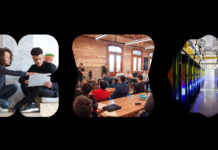
Blockchain technology arrives to Academia. It means that students will securely own and share with employers their digital diplomas, and these credentials will exist even if the issuing institutions go away.
MIT -co-founder, along with Harvard, of the edX project– is becoming one of the first universities to use Bitcoin’s blockchain technology to issue recipient-owned virtual credentials, MIT News reports.
As part of a pilot program, a cohort of 111 graduates became this summer the first to have the option to receive their diplomas on their smartphones via an app, in addition to the traditional format.
Students use an app, called Blockcerts Wallets, to get a verifiable, tamper-proof version of their diploma that they can share with employers, schools, family and friends. To ensure the security of the diploma, the pilot utilizes the same blockchain technology that powers the Bitcoin digital currency.
It also integrates with MIT’s identity provider, Touchstone. And while digital credentials aren’t new — some schools and businesses are already touting their use of them — the MIT pilot is groundbreaking because it gives students autonomy over their own records.
“From the beginning, one of our primary motivations has been to empower students to be the curators of their own credentials,” said Registrar and Senior Associate Dean Mary Callahan. “This pilot makes it possible for them to have ownership of their records and be able to share them in a secure way, with whomever they choose.”
HOW THE TECHNOLOGY WORKS
The developed technology used an open-source toolkit called Blockcerts –which any developer or school can use to issue and verify blockchain-based educational credentials. It draws on the Bitcoin blockchain, an open, global ledger that records transactions on a distributed database.
Each transaction — known as a block — is encrypted, timestamped, and then added to the previous block on the chain, creating a timeline. A transaction cannot be modified once it is recorded, because any change in one block would require the alteration of all subsequent blocks, and because the information is distributed across a decentralized, worldwide network of computers.
The software Learning Machine –the vendor behind this development– used the Bitcoin blockchain, but it’s not the only blockchain around. There has been a proliferation of new types of blockchains, but that Bitcoin remains the gold standard for Learning Machine’s purposes because it prioritizes security over other qualities like speed, cost, or ease of use. “We believe it’s still the right choice for official records that need to last a lifetime and work anywhere in the world,” he says.
With Blockcerts Wallet, after the student downloads the app, it generates the public-private key pair and sends the public key to MIT, where it is written into the digital record. Next, a one-way hash (a string of numbers that can be used for verification later) is added to the blockchain. The diploma information itself doesn’t go onto the blockchain, just the timestamped transaction indicating that MIT created the digital record. Finally, MIT emails the digital diploma (a JavaScript Object Notation file, or JSON) with the student’s public key inscribed into it. Because the mobile app on the student’s phone has their unique private key, the student can prove ownership of the diploma.
For students, the benefits go beyond mere novelty. They can share their diplomas almost immediately with whomever they please, free of charge, without involving an intermediary. This is particularly important for students who need to prove to an employer or another university that they have an MIT diploma.
And thanks to the blockchain, the third party can easily verify that the diploma is legitimate without having to contact the Registrar’s Office. Using a portal, employers or schools can paste a link or upload a student’s digital diploma file and receive a verification immediately. The portal essentially uses the blockchain as a notary, locating the transaction ID (which identifies when the digital record was added to the blockchain), verifying the keys, and confirming that nothing has been altered since the record was added.
This adds great value to higher education.
- MIT News: Digital Diploma debuts at MIT

 En Español
En Español




















